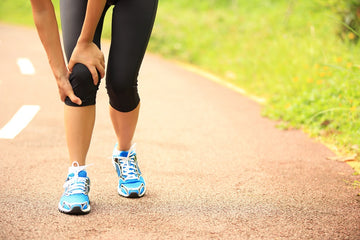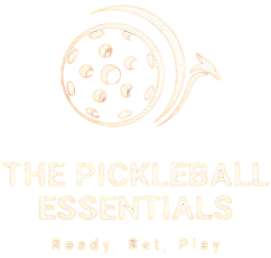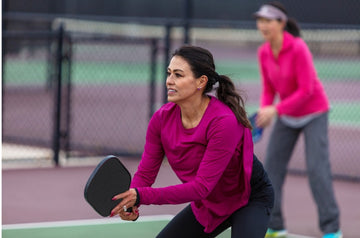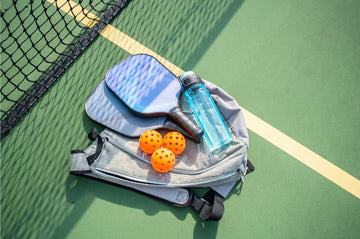Injury Prevention in Pickleball: A Comprehensive Guide for Players
by Linda Conrad on Aug 27, 2024

Introduction
Pickleball is a rapidly growing sport that combines elements of tennis, badminton, and table tennis. While it's enjoyed by players of all ages, it’s particularly popular among older adults due to its moderate physical demands and social nature. However, like any physical activity, pickleball carries the risk of injuries. This guide will help you understand common injuries in pickleball, how to prevent them, and what to do if you get hurt. By following these tips, you can enjoy the game safely and keep playing for years to come.
Common Pickleball Injuries
- Shoulder Strains and Rotator Cuff Injuries:
- Statistics: Shoulder injuries are common among pickleball players, especially those over 50. According to a study by the National Institute of Health, rotator cuff tears occur in about 10-15% of all athletes, including pickleball players.
- Cause: These injuries often result from repetitive overhead movements, such as serves and smashes.
- Prevention: Proper warm-up, stretching, and strengthening exercises can reduce the risk. Players should also focus on using proper technique and avoid overuse.
- Knee Injuries (Meniscus Tears, Tendinitis):
- Statistics: Knee problems are a major concern for older athletes, with studies showing that around 50% of sports-related knee injuries occur in individuals over 50.
- Cause: Sudden movements, pivoting, and frequent changes in direction can put stress on the knees.
- Prevention: Wearing supportive footwear, using knee braces, and doing exercises to strengthen the muscles around the knee can help. It’s also important to practice good court movement and avoid sudden, sharp turns.
- Ankle Sprains:
- Statistics: Ankle sprains account for about 20% of all sports injuries. In pickleball, the fast-paced nature and quick direction changes increase the risk.
- Cause: Ankle sprains often occur when a player lands awkwardly or twists their ankle during sudden movements.
- Prevention: To prevent ankle sprains, players should wear shoes with good ankle support, practice balance exercises, and consider using ankle braces for added stability.
- Tennis Elbow (Lateral Epicondylitis):
- Statistics: Tennis elbow affects 15% of racket sport athletes, including pickleball players, and is most common in individuals aged 30-50.
- Cause: This condition is caused by repetitive stress on the elbow tendons, often due to improper grip or swing technique.
- Prevention: Using the correct grip size, employing proper stroke techniques, and doing strengthening exercises for the forearm muscles can help prevent tennis elbow. Regularly stretching the forearm muscles is also beneficial.

Prevention Tips for Pickleball Players
-
Warm-Up and Stretching:
Before starting any game, take at least 10-15 minutes to warm up your muscles. Engage in light cardio, such as jogging or jumping jacks, to increase blood flow. Follow this with dynamic stretches, focusing on the shoulders, knees, and ankles. After the game, perform static stretches to improve flexibility and reduce muscle stiffness. - Use the Right Equipment:
- Footwear: Choose shoes designed for court sports with good traction and support to prevent slipping and ankle injuries.
- Paddles: Use a paddle that matches your skill level and physical condition. A lighter paddle can reduce the strain on your shoulder and elbow.
-
Strengthening Exercises:
Engage in regular strength training exercises, focusing on key areas like the shoulders, core, and legs. Exercises such as squats, lunges, and resistance band routines can help build the muscles needed for stability and injury prevention. Additionally, incorporating exercises that improve balance can help prevent falls and ankle injuries. -
Stay Hydrated and Listen to Your Body:
Dehydration can lead to muscle cramps and fatigue, increasing the risk of injury. Drink plenty of water before, during, and after playing. Also, listen to your body’s signals. If you feel pain or discomfort, take a break and avoid pushing through the pain. -
Learn Proper Technique:
Take lessons from a qualified instructor to learn the correct techniques for serving, volleying, and other movements. Proper technique can significantly reduce the risk of overuse injuries and improve your overall game performance.
Pain Management and Recovery
- RICE Method:
- Rest: Avoid using the injured area to prevent further damage.
- Ice: Apply ice packs to reduce swelling and pain for 15-20 minutes every 2-3 hours.
- Compression: Use an elastic bandage to reduce swelling.
- Elevation: Keep the injured area elevated to reduce swelling.
-
Physical Therapy:
For chronic pain or severe injuries, consult a physical therapist. They can provide targeted exercises to strengthen the affected area and speed up recovery. - Use of Supports and Braces:
- Knee Braces: These provide stability and support, reducing the strain on your knees during play.
- Ankle Braces: Useful for preventing sprains, especially if you’ve had previous ankle injuries.
- Compression Gear: Helps improve circulation, reduce swelling, and support muscle recovery.
Conclusion
Injury prevention is crucial for maintaining a long and healthy pickleball career. By understanding common injuries, taking preventive measures, and using the right equipment, you can significantly reduce your risk of injury. Remember, playing smart and taking care of your body will not only improve your game but also keep you on the court longer.




